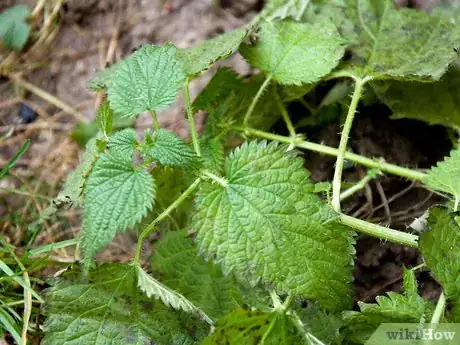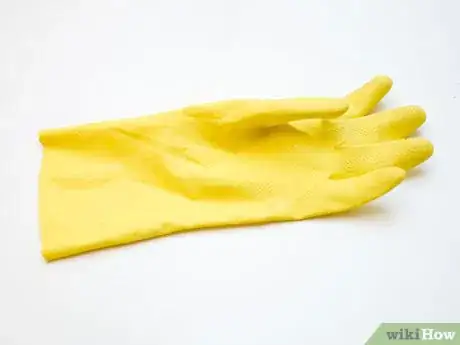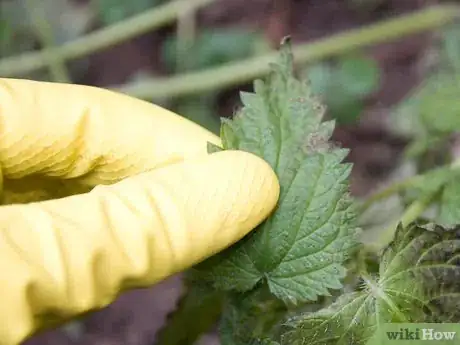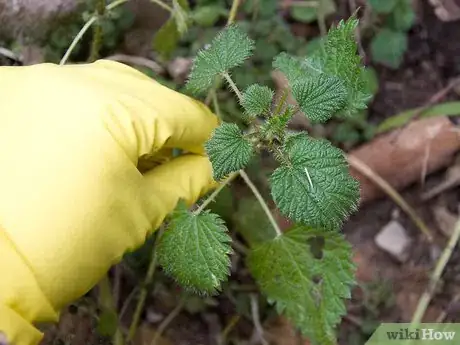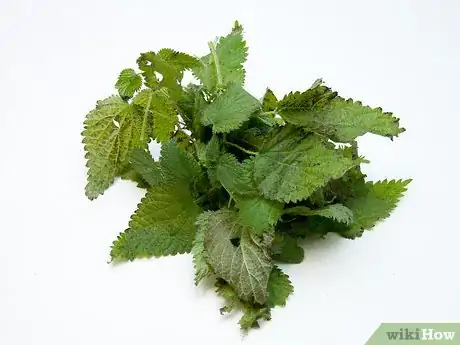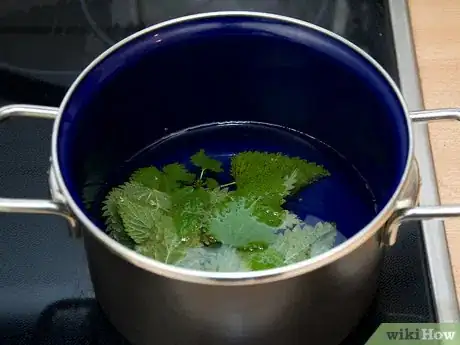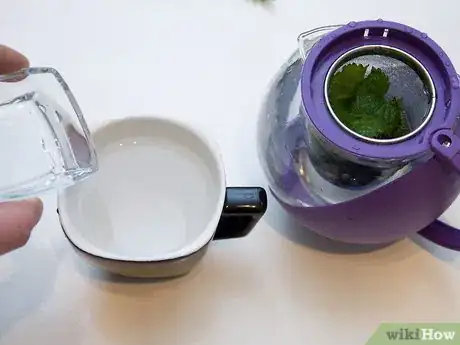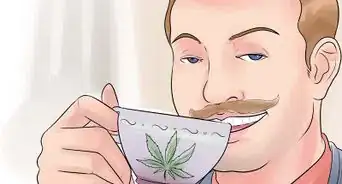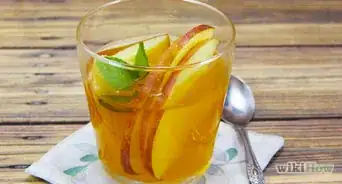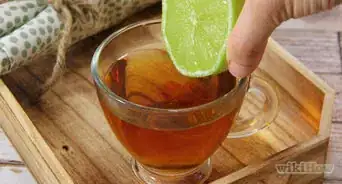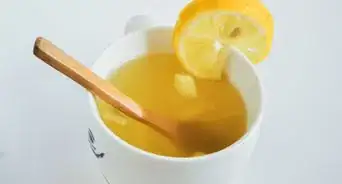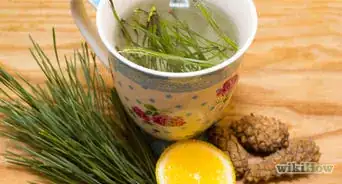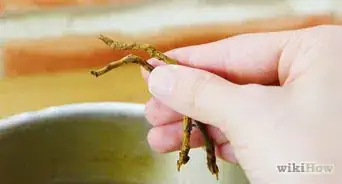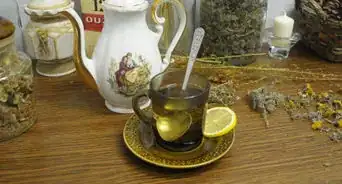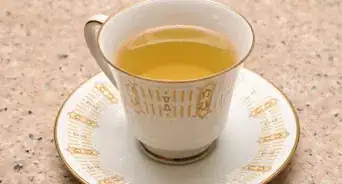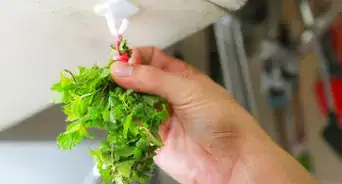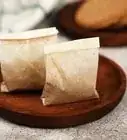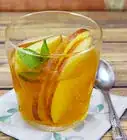wikiHow is a “wiki,” similar to Wikipedia, which means that many of our articles are co-written by multiple authors. To create this article, volunteer authors worked to edit and improve it over time.
There are 7 references cited in this article, which can be found at the bottom of the page.
wikiHow marks an article as reader-approved once it receives enough positive feedback. In this case, 90% of readers who voted found the article helpful, earning it our reader-approved status.
This article has been viewed 104,583 times.
Learn more...
Despite the painful stings the fresh plant delivers, brewed or cooked nettle is safe to eat. It may even be downright nutritious. Talk to your doctor before brewing if you are taking medication or have a medical condition.
Steps
Harvesting Nettles
-
1Gather young, spring nettles. Plan your expedition in the spring, before they've flowered. Some think that nettles taste bitter and unpleasant after they've flowered.[1] Others claim that cystoliths (microscopic stones) in the adult plants can irritate the urinary tract. Both of these claims are disputed by some nettle harvesters, but most stick to the young plants.[2]
- Some subspecies of nettle will flower in late fall.[3]
-
2Protect yourself from stings. Wear gloves, long sleeves, and long trousers to avoid the stinging hairs. Bring along a pair of scissors or garden clippers to make harvesting easier.
- Many experienced foragers pick barehanded, but they often contradict each other when giving advice. This may be due to variation between subspecies of nettles. The key is to look closely at the plant and figure out where the hairs are. They're usually angled the same way, so you can avoid most stings if you move along the plant from the opposite direction, or pinch the leaves from straight above and below.
Advertisement -
3Identify the nettles. Nettles are common weeds throughout much of the world, and they should be easy to find in partial shade, such as a fence line or forest edge. The plants are dark green, with leaves growing in pairs opposite each other. The leaves are heart- or lance-shaped, with a toothed ridge around the perimeter.[4]
- There are other, less common edible plants called "nettles" because they cause a similar sting. These may have a different appearance.[5]
-
4Pick healthy leaves. The shoots are edible, but there's no reason to put them in tea. Check the top bud and leaves for holes or black specks, which are signs of pests.[6] If they're healthy, clip them off and toss them in your bag. Grab the stem and run your gloved hand upward to remove all the leaves at once.
- To keep the plants alive, harvest just the top two or three pairs of leaves. Nettles are hardy weeds, though, so this may not be a concern.
- A very young plant, if the top is clipped, will grow outward into a bushy nettle good for later harvesting.
-
5Dry the leaves (optional). You can use fresh or dried leaves to make tea. Each has its own flavor. To dry them, just leave them in a paper bag in a well-ventilated room until dry, but still green. Dry leaves usually don't sting, but they may still cause splinters or minor irritation.[7]
Brewing Nettle Tea
-
1Know the medical risks. Nettle is safe for most people, but may have dangerous interactions with some disorders and drugs. While more studies are necessary, most medical organizations give the following advice:
- Avoid nettle tea if you are pregnant, as it may cause contractions or miscarriage.
- Children and breastfeeding women should not drink nettle tea, as the effects on children are unknown.
- Talk to your doctor first if you have issues with blood sugar (including diabetes), blood pressure, blood disorders, or if you are on any medication — even an over-the-counter painkiller.
- Start with small quantities, especially if you have any medical ailment or history of allergies.
-
2Wash the nettles. Sift through your collection and remove any stowaway bugs. Wash the leaves in a sieve under running water, rubbing off dust or other contaminants with gloved hands.
-
3Boil the nettles. Put the leaves in boiling water for 10–15 minutes, or until the water turns light green. One loose cup (240 mL) leaves is enough for two glasses of tea, although you can make it stronger or weaker.
- If you don't want to get your kettle mucky, just pour boiling water over the leaves and let steep.
-
4Drink plain or with sweetener. The leaves will no longer sting you. You may still want to strain the tea through a mesh sieve to make the tea easier to drink.
-
5Turn it pink with lemon juice. Lemon juice or any other acid will turn the nettle tea pink. This will likely be more dramatic if the stems are boiled as well, since they contain more of the color-changing chemicals.[8] [9]
- Some folk medicine traditions use this alteration for different health benefits. This has not been scientifically studied.
- The chemicals responsible are anthocyanin and the related anthocyanin glucosides.[10]
Community Q&A
-
QuestionWhat is nettle tea good for?
 Community AnswerIt's good for optimizing kidney function.
Community AnswerIt's good for optimizing kidney function. -
QuestionCan I boil the leaves still on the stem or do I have to take the leaves off to make tea with it?
 Community AnswerEither way is fine. Boiling with the stems will help the tea turn pink if you add lemon juice.
Community AnswerEither way is fine. Boiling with the stems will help the tea turn pink if you add lemon juice. -
QuestionCan I prepare a day's worth of tea and drink it cold?
 Community AnswerYes! Brew hot first, then let steep. Once it cools, put it into the refrigerator.
Community AnswerYes! Brew hot first, then let steep. Once it cools, put it into the refrigerator.
References
- ↑ http://www.woodlands.co.uk/blog/practical-guides/a-cup-of-nettle-tea/
- ↑ http://www.wolfcollege.com/stinging-nettle-harvesting-processing-and-recipes/
- ↑ http://www.ipm.ucdavis.edu/PMG/PESTNOTES/pn74146.html
- ↑ http://www.ipm.ucdavis.edu/PMG/PESTNOTES/pn74146.html
- ↑ http://identifythatplant.com/three-members-of-the-nettle-family/
- ↑ http://www.wolfcollege.com/stinging-nettle-harvesting-processing-and-recipes/
- ↑ http://www.wolfcollege.com/stinging-nettle-harvesting-processing-and-recipes/
- ↑ http://www.researchgate.net/profile/Patrizia_Pinelli/publication/23243878_Extraction_and_HPLC_analysis_of_phenolic_compounds_in_leaves_stalks_and_textile_fibers_of_Urtica_dioica_L/links/5411a9d10cf29e4a23297a6f.pdf
- ↑ http://www.ncbi.nlm.nih.gov/pmc/articles/PMC3349212/
About This Article
To make nettle tea, start by washing the leaves in a sieve under running water to remove any dust or bugs. Then, cook 1 loose cup of nettles in boiling water for 10 to 15 minutes until the water turns light green. Next, strain the tea before serving with sugar, if desired. You can also turn your tea pink by adding lemon juice. For tips on how to harvest nettles for your tea, keep reading!
